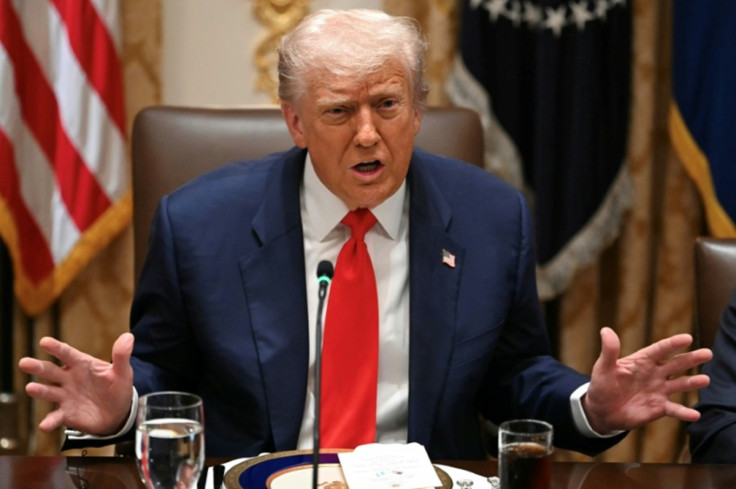White House East Wing Demolition: Trump Begins Razing White House Without Permission—Again
Preservationists and regulators say work started before full approval, raising legal and heritage concerns

Demolition work has begun on part of the White House's East Wing to make way for a new £186 million (about US$125 million) ballroom backed by Donald Trump.
The project has triggered a dispute after officials said work appeared to start before full regulatory approval, raising concern among preservationists about the impact on one of America's most historic buildings. The White House insists the privately funded scheme will not cost taxpayers, but critics warn that bypassing oversight risks damaging the site's heritage.
On 20 October, photographers captured excavators tearing into the East Wing façade as Trump told visiting college athletes that 'construction is going on right behind us'. The ballroom, first unveiled in July 2025, would cover 90,000 square feet and host up to 999 guests, ending the need for temporary pavilions during large state events, according to the Washington Post.
Regulatory Disputes
The National Capital Planning Commission (NCPC), which oversees major developments on federal land in Washington DC, has not yet approved the project's building plans. Trump's team argues that the current work counts only as site preparation, which does not require formal review. NCPC chair Will Scharf, appointed during Trump's earlier administration, said the commission typically reviews only 'vertical construction'.
Preservation groups and several lawmakers have accused the White House of bypassing proper procedure, arguing that starting work before NCPC approval undermines safeguards protecting the building's integrity. Former NCPC chair L. Preston Bryant Jr. warned that skipping consultation could lead to design errors or structural issues later, according to AP News.
The East Wing, built in 1902 and last renovated in 1942, houses the offices of the first lady and serves as the main public entrance. Its heritage status means any modification is subject to complex layers of federal and environmental review.
Political and Public Reactions
The timing has also drawn criticism. The project began during a federal government shutdown, with other departments facing funding shortfalls. Opponents say building a lavish ballroom sends the wrong message in a period of public-sector strain, according to The Guardian. Supporters counter that, being privately financed, it will not burden taxpayers and will expand the White House's capacity for major events.
Trump has previously hinted the new space could host large public occasions, including a possible White House UFC showcase in 2026, though no plans have been confirmed. Reuters reported that the president recently announced a UFC event scheduled for June next year, coinciding with his 80th birthday.
Images of demolition machinery on the White House lawn quickly circulated online, fuelling debate about the project's legality and symbolism, according to TIME magazine. Analysts say the decision to proceed before approval reflects the administration's willingness to test institutional boundaries in pursuit of Trump's preferred aesthetic.
BREAKING: We're getting an expansion!
— The White House (@WhiteHouse) July 31, 2025
Beginning in September, construction will begin on a brand-new 90,000 square ft ballroom that will be enjoyed for generations to come. ✨
Visit https://t.co/fYztfJspLP for more information pic.twitter.com/SVvlaDpRmA
Americans go without paychecks, Trump’s turning the White House into his pet construction project. pic.twitter.com/1lGBOIKfg9
— Mark Takano (@RepMarkTakano) October 20, 2025
Trump is demolishing my beautiful country and its people. Tearing down history for a gaudy gold ballroom, arresting and attacking innocent people. The best part of our country is its diversity. Speak out before our country is lost - unless the tacky gold Oval Office is your idea… pic.twitter.com/apF8QHwa6x
— Jenn 🇺🇦 (@seahorsebend) October 20, 2025
Remember when Donald Trump said that construction of his new $250M ballroom wouldn’t interfere with the existing White House structure? pic.twitter.com/7BtoZDuYuD
— Karly Kingsley (@karlykingsley) October 20, 2025
🚨 JUST IN: Construction workers at President Trump's direction have BEGUN demolition on the East Wing facade to build the DJT-funded ballroom
— Eric Daugherty (@EricLDaugh) October 20, 2025
Trump has PROMISED it will match up perfectly with the current White House architecture. No "modernist" BS.
Amazing things are… pic.twitter.com/dwSqd6MLGr
What Happens Next
The White House has pledged to submit full plans for the ballroom's construction phase to the NCPC within weeks. Preservation groups are demanding transparency over donor funding and assurances about the project's long-term impact.
The East Wing demolition has become a test of how far a sitting president can reshape America's most famous residence without formal authorisation. Whether it is remembered as bold modernisation or bureaucratic overreach will depend on how regulators respond.
© Copyright IBTimes 2025. All rights reserved.





















